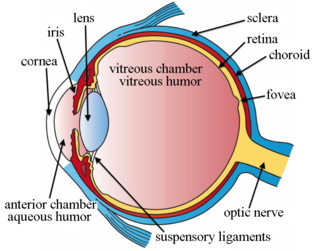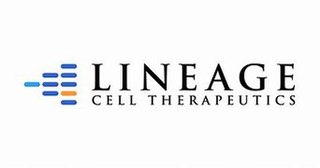Related Research Articles

Photodynamic therapy (PDT) is a form of phototherapy involving light and a photosensitizing chemical substance, used in conjunction with molecular oxygen to elicit cell death (phototoxicity).
The National Eye Institute (NEI) is part of the U.S. National Institutes of Health (NIH), an agency of the U.S. Department of Health and Human Services. The mission of NEI is "to eliminate vision loss and improve quality of life through vision research." NEI consists of two major branches for research: an extramural branch that funds studies outside NIH and an intramural branch that funds research on the NIH campus in Bethesda, Maryland. Most of the NEI budget funds extramural research.

Light therapy, also called phototherapy or bright light therapy is the exposure to direct sunlight or artificial light at controlled wavelengths in order to treat a variety of medical disorders, including seasonal affective disorder (SAD), circadian rhythm sleep-wake disorders, cancers, and skin wound infections. Treating skin conditions such as neurodermatitis, psoriasis, acne vulgaris, and eczema with ultraviolet light is called ultraviolet light therapy.
PDT may refer to:

Macular degeneration, also known as age-related macular degeneration, is a medical condition which may result in blurred or no vision in the center of the visual field. Early on there are often no symptoms. Over time, however, some people experience a gradual worsening of vision that may affect one or both eyes. While it does not result in complete blindness, loss of central vision can make it hard to recognize faces, drive, read, or perform other activities of daily life. Visual hallucinations may also occur.

Central serous chorioretinopathy, also known as central serous retinopathy (CSR), is an eye disease that causes visual impairment, often temporary, usually in one eye. When the disorder is active it is characterized by leakage of fluid under the retina that has a propensity to accumulate under the central macula. This results in blurred or distorted vision (metamorphopsia). A blurred or gray spot in the central visual field is common when the retina is detached. Reduced visual acuity may persist after the fluid has disappeared.
Photomedicine is an interdisciplinary branch of medicine that involves the study and application of light with respect to health and disease. Photomedicine may be related to the practice of various fields of medicine including dermatology, surgery, interventional radiology, optical diagnostics, cardiology, circadian rhythm sleep disorders and oncology.

Methyl aminolevulinate (MAL) is a drug used as a sensitizer in photodynamic therapy. It is a prodrug that is metabolized to protoporphyrin IX. It is marketed as Metvix.

Pegaptanib sodium injection is an anti-angiogenic medicine for the treatment of neovascular (wet) age-related macular degeneration (AMD). It was discovered by NeXstar Pharmaceuticals and licensed in 2000 to EyeTech Pharmaceuticals, now OSI Pharmaceuticals, for late stage development and marketing in the United States. Gilead Sciences continues to receive royalties from the drugs licensing. Outside the US pegaptanib is marketed by Pfizer. Approval was granted by the U.S. Food and Drug Administration (FDA) in December 2004.

Choroidal neovascularization (CNV) is the creation of new blood vessels in the choroid layer of the eye. Choroidal neovascularization is a common cause of neovascular degenerative maculopathy commonly exacerbated by extreme myopia, malignant myopic degeneration, or age-related developments.
Aflibercept, sold under the brand names Eylea among others, is a medication used to treat wet macular degeneration and metastatic colorectal cancer. It was developed by Regeneron Pharmaceuticals and is approved in the United States and the European Union.

Talaporfin is a chlorin based photosensitizer used in photodynamic therapy (PDT).
Jeffrey W. Berger was an American vitreoretinal surgeon and engineer.

Laser coagulation or laser photocoagulation surgery is used to treat a number of eye diseases and has become widely used in recent decades. During the procedure, a laser is used to finely cauterize ocular blood vessels to attempt to bring about various therapeutic benefits.

Lineage Cell Therapeutics, Inc. is a clinical-stage biotechnology company developing novel cell therapies for unmet medical needs. Lineage’s programs are based on its robust proprietary cell-based therapy platform and associated in-house development and manufacturing capabilities. With this platform Lineage develops and manufactures specialized, terminally differentiated human cells from its pluripotent and progenitor cell starting materials. These differentiated cells are developed to either replace or support cells that are dysfunctional or absent due to degenerative disease or traumatic injury or administered as a means of helping the body mount an effective immune response to cancer.
Joan Whitten Miller is a Canadian-American ophthalmologist and scientist who has made notable contributions to the treatment and understanding of eye disorders. She is credited for developing photodynamic therapy (PDT) with verteporfin (Visudyne), the first pharmacologic therapy for retinal disease. She also co-discovered the role of vascular endothelial growth factor (VEGF) in eye disease and demonstrated the therapeutic potential of VEGF inhibitors, forming the scientific basis of anti-VEGF therapy for age-related macular degeneration (AMD), diabetic retinopathy, and related conditions.
Julia Levy is a Canadian microbiologist, immunologist, educator and entrepreneur.
Anti–vascular endothelial growth factor therapy, also known as anti-VEGF therapy or medication, is the use of medications that block vascular endothelial growth factor. This is done in the treatment of certain cancers and in age-related macular degeneration. They can involve monoclonal antibodies such as bevacizumab, antibody derivatives such as ranibizumab (Lucentis), or orally-available small molecules that inhibit the tyrosine kinases stimulated by VEGF: sunitinib, sorafenib, axitinib, and pazopanib.
Tayyaba Hasan is a Professor of Dermatology at the Wellman Center for Photomedicine at Harvard Medical School. She is one of the inventors of Visudyne, a Food and Drug Administration approved treatment for age-related macular degeneration. She received the 2018 SPIE Britton Chance Biomedical Optics Award.
Polypoidal choroidal vasculopathy (PCV) is an eye disease primarily affecting the choroid. It may cause sudden blurring of vision or a scotoma in the central field of vision. Since Indocyanine green angiography gives better imaging of choroidal structures, it is more preferred in diagnosing PCV. Treatment options of PCV include careful observation, photodynamic therapy, thermal laser, intravitreal injection of anti-VEGF therapy, or combination therapy.
References
- ↑ http://www.photobiology.com/v1/nadezhda/default.htm "Clinical results of updating method of a photodynamic therapy with “Photosens” :use as transport protein human albumines and fractional injection."[ unreliable source? ]
- ↑ Apolikhin, Oleg I.; Chernishov, Igor V.; Sivkov, Andrey V.; Altunin, Denis V.; Kuzmin, Sergey G.; Vorozhtsov, Georgy N. (2007). "Adjuvant Photodynamic Therapy (PDT) with Photosensitizer Photosens for Superficial Bladder Cancer. Experimental investigations to treat prostate cancer by PDT with Photosens". Therapeutic Laser Applications and Laser-Tissue Interactions III. pp. 6632_64. doi:10.1364/ECBO.2007.6632_64. ISBN 978-0-8194-6776-8. INIST 19084033.
- ↑ Sokolov, Victor V.; Chissov, Valery I.; Yakubovskaya, Raisa I.; Aristarkhova, E. I.; Filonenko, E. V.; Belous, T. A.; Vorozhtsov, Georgy N.; Zharkova, Natalia N.; Smirnov, V. V.; Zhitkova, Margarita B. (31 January 1996). Ehrenberg, Benjamin; Jori, Giulio; Moan, Johan (eds.). "Photodynamic therapy (PDT) of malignant tumors by photosensitzer photosens: results of 45 clinical cases". Proceedings of the SPIE. Photochemotherapy: Photodynamic Therapy and Other Modalities. 2625: 281–287. Bibcode:1996SPIE.2625..281S. doi:10.1117/12.230943. S2CID 72304555.
- ↑ Avetisov, SE; Budzinskaia, MV; Kiseleva, TN; Kazarian, EE; Gurova, IV; Smirnova, TV; Shchegoleva, IV; Loshchenov, VB; Shevchik, SA; Kuz'min, SG; Vorozhtsov, GN (November 2007). "[Photodynamic therapy for subretinal neovascular membranes. Communication 1. Results of treatment for age-related macular degeneration]". Vestnik Oftalmologii. 123 (6): 3–7. PMID 18225515.